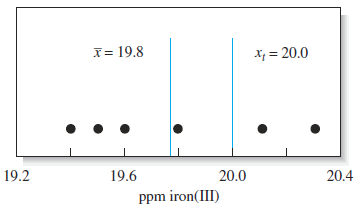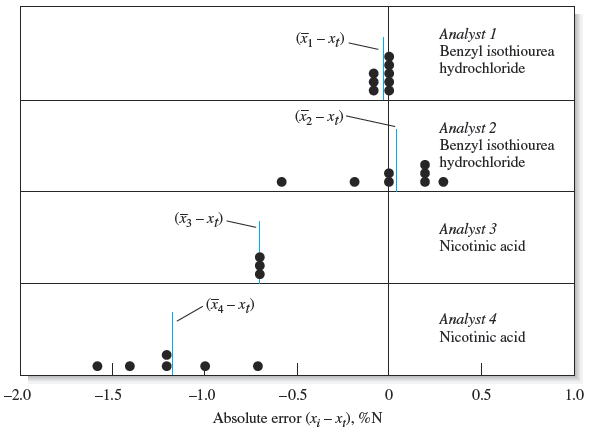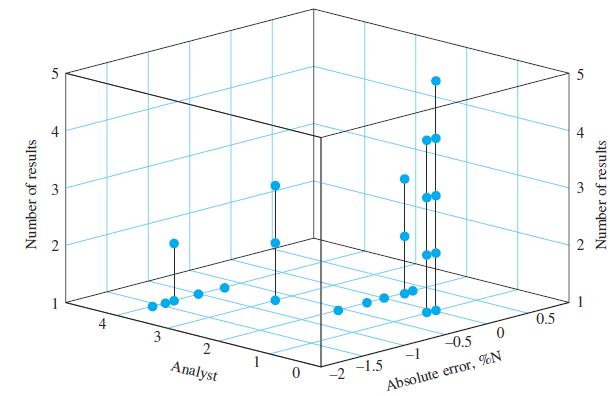
The Nat ure of Random Errors
 المؤلف:
D. A. Skoog, F. J.Holler, D M. West, and S. R. Crouch
المؤلف:
D. A. Skoog, F. J.Holler, D M. West, and S. R. Crouch
 المصدر:
Fundamentals of Analytical Chemistry
المصدر:
Fundamentals of Analytical Chemistry
 الجزء والصفحة:
9th. p 93
الجزء والصفحة:
9th. p 93
 25-4-2017
25-4-2017
 2198
2198
The Nat ure of Random Errors
Random, or indeterminate, errors can never be totally eliminated and are often the major source of uncertainty in a determination. Random errors are caused by the many uncontrollable variables that accompany every measurement. Usually, most contributors to random error cannot be positively identified. Even if we can identify random error sources, it is often impossible to measure them because most are so small that they cannot be detected individually. The accumulated effect of the individual uncertainties, however, causes replicate results to fluctuate randomly around the mean of the set. For example, the scatter of data in Figures 1.1 and 1.2 is a direct result of the accumulation of small random uncertainties.

Figure 1.1 Results from six replicate determinations of iron in aqueous samples of a standard solution containing 20.0 ppm iron(III).

Figure 1.2 Absolute error in the micro-Kjeldahl determination of nitrogen.
We have replotted the Kjeldahl nitrogen data from Figure 1.2 as a three-dimensional plot in Figure 1.3 to better reveal the precision and accuracy of each analyst. Note that the random error in the results of analysts 2 and 4 is much larger than that seen in the results of analysts 1 and 3. The results of analyst 3 show outstanding precision but poor accuracy. The results of analyst 1 show excellent precision and good accuracy.

Figure 1.3 A three-dimensional plot showing absolute error in Kjeldahl nitrogen determinations for four different analysts. Note that the results of analyst 1 are both precise and accurate. The results of analyst 3 are precise, but the absolute error is large. The results of analysts 2 and 4 are both imprecise and inaccurate.
 الاكثر قراءة في مواضيع عامة في الكيمياء التحليلية
الاكثر قراءة في مواضيع عامة في الكيمياء التحليلية
 اخر الاخبار
اخر الاخبار
اخبار العتبة العباسية المقدسة


